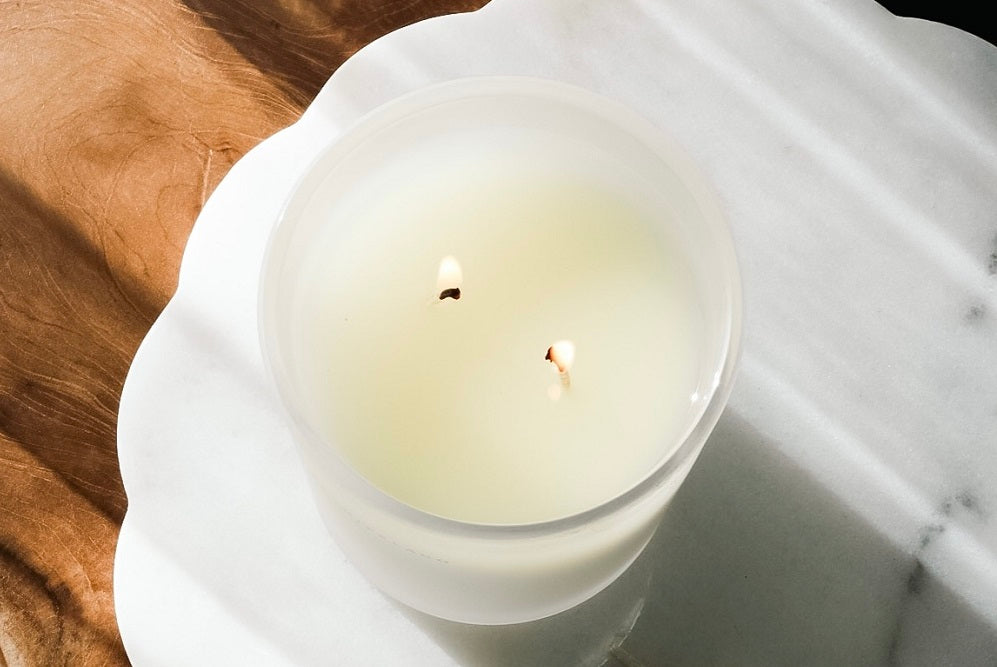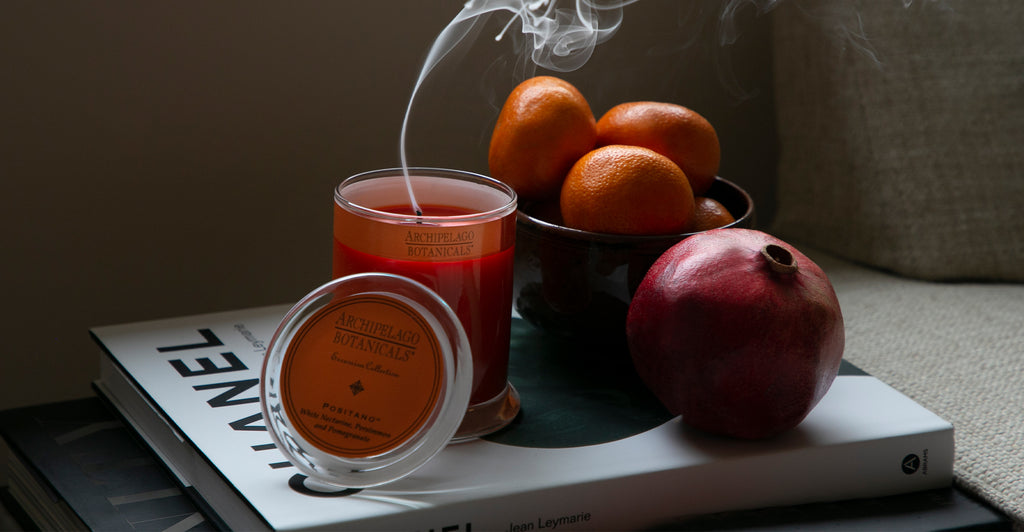Guide to the 7 Types of Candle Wax
Whether you consider yourself a candle connoisseur or a wax-burning novice, it’s hard to deny the gentle elegance a candle provides a space. From setting the tone at dinner parties to easing into spa night, candles have been a homemaking staple for centuries.
From wax to wick, there are many components to these flickering beauties. But one of the most important elements to consider when searching for the highest quality candle is its type of wax—which helps determine its burn time, melting point, and throw.
Next time you catch your wick burning low, don’t fret about spending hours searching for the ideal candle wax. We’ve compiled a complete guide to the seven types of candle wax and how to choose the best one for your lifestyle.
The Wide World of Wax
Candle wax types have evolved as much as the purpose of candles has through centuries and civilizations. As a candle back in time was gratified for its light-bestowing abilities, today, scented candles can do a whole lot more. And as a result, candlemakers everywhere are experimenting with all kinds of ingredients and wax types to design candles that throw fragrance longer, burn more cleanly, and look the most exquisite.
How is candle wax made? From the processing of certain animal or plant materials. Each material requires a different extraction process to reach a pure wax that can burn.
Ancient Romans dipped candles from tallow while in India they sourced their wax from boiling cinnamon. In the 17th and 18th centuries, wax in Europe most commonly came from sperm whales until the whaling industry declined.1
What is candle wax made of today? That story is much more diverse.
#1 Soy Wax
Soy is one of the main natural and renewable wax sources that many people are choosing to welcome into their homes—especially those looking for an alternative to animal-based or synthetic waxes for their candles.
So, are soy candles better for your space? The pros list of choosing soy candles is a long one, including:
- Soy wax candles burn for a long time
- Soy wax candles offer a high-quality fragrance throw
- Soy offers a clean and residue-free burn
- Soy is a biodegradable and eco-friendly alternative
As it is a softer material, soy wax works best in candles that come in vessels such as tealights and votive candles. So feel free to dress up your soy candles as you’d like and make them feel uniquely part of your decor.
#2 Coconut Wax
As different types of candle wax go, coconut wax has entered the world for its natural material and smooth burning. Its softness and low melting point makes it suitable to mix with other waxes, such as beeswax or soy, to create a wax blend.
It excels at providing:
- Minimal soot or smokey residue while burning
- A smooth, creamy texture for molded candles
- Biodegradability and another natural alternative
Don’t be fooled by the name—not all coconut candles will smell like coconut. Coconut wax has the ability to hold onto scent well, throwing whichever essential oil or added fragrance it contains.
#3 Beeswax
As far as natural waxes, beeswax joins the ranking alongside soy and coconut wax candles. Beeswax has illuminated homes for centuries. Just as bees use wax as the glue of their hives, people began to use it as the glue, and fuel, for their candles to light their paths.
Beeswax has provided candlelight since early civilizations, one of them being the Tang Dynasty during the 1st century in China. Ancient Egyptian civilization would even roll papyrus and dip it in melted beeswax.
Beeswax candles still enjoy some popularity to this day because:
- Beeswax is a natural resource that comes from bees
- Beeswax has a neutral smell, making it easier to add fragrance
- Beeswax has a lower burning point, helping it burn longer
However, beeswax has one major downside in candles: they don’t hold or throw fragrance as long as some other candles. So, for the candle owner that’s looking for longer hours of lasting fragrance, beeswax may not be the best choice.
#4 Paraffin Wax
Paraffin wax is perhaps the most common synthetic wax you can find in the candle aisle today. Paraffin candle wax emerged in the 1850s during the Industrial Revolution when chemists invented a way to separate wax from petroleum and refine it.2 This allowed for an increase in candle production and a reduction in cost.
Paraffin has continued to be a primary source of inexpensive wax as it:
- Can burn more evenly than other synthetic waxes
- Holds and throws fragrance better than other synthetic waxes
- Offers some of the most low-cost options for candles
The main downside to paraffin candle wax is that it doesn’t burn as cleanly, and can cause the release of soot and other chemicals into the air. Thus, paraffin wax is losing its popularity as more natural, biodegradable options such as soy and coconut emerge on the market.
#5 Palm Wax
Another natural wax, palm wax, can give candles a unique texture and look. You can easily recognize a palm wax candle by its crystallized, marble-like pattern that runs throughout the candle.
In addition, characteristics of palm wax include:
- A harder durability compared to coconut wax
- A higher melting point offering a longer burn time
- They can be burned inside or outside of a vessel
The main concern that people have with palm wax, although coming from a natural source, is that it contributes to the deforestation of palm trees.
#6 Gel Wax
Gel wax, unlike other wax types, is a combination of 95% mineral oil and 5% polymer resin, causing its consistency to be quite soft and gelatin-like. This softness requires a vessel for the candle to prevent the gel from spilling onto your table or furniture.
Undyed gel wax allows for a translucent quality, so you’ll often find a few shells, beads, or other decorative materials inside of a gel candle. People also enjoy gel candles for their higher melting point than wax candles which allows you to enjoy their light for longer.
The main downsides to gel candles are that they have a propensity to overheat, causing thin glass vessels to crack or break. Additionally, they aren’t natural or biodegradable.
#7 Rapeseed Wax
Another lesser-known natural wax option, rapeseed wax is a renewable vegetable wax that originates from the European-native seeds of the rapeseed plant. It touts a high melting point and clean, soot-free burning experience. Its main drawback is its higher price point due to the rigorous sourcing and extraction process.
Which Candle Wax Type is Right for Me?
Now that you have an overview of the seven main types of candle wax on the market, which candle wax is right for you? This depends on what you’re looking for in a candle.
Here are some common candle-owner priorities and some candle wax options that are well suited for each:
What Else Makes Up a Candle?
Besides finding the best wax for you, it's important to know what else goes into candle making. They’re more than just wax. There are four other main components to every candle, each influencing the burning experience. Once you’ve decided on your preferred wax type, consider these other candle parts to find your perfect match.
Enjoy Expertly Crafted Candles from Archipelago
Oftentimes the simplest pleasures are the most satisfying. This is why candles have been able to hold—and gain—timeless value throughout the years. It is no longer necessary to guide yourself through the darkness with a candle in your hand, but we still adore candles for the gilded glow they bring to the present moment.
Experience love at first light through our candle store. Offering candles in natural fragrances inspired by destinations across the world, we take pride in our natural soy and coconut candles that deliver luxuriously rich fragrances to your home.
From the classic relaxation of eucalyptus to the invigorating zest of pink grapefruit, each of our candles evokes a unique sense of serenity. Enjoy these alluring fragrances in clean-burning, natural wax forms that last longer and whisk you away to any destination.
Sources:
- Candles.org. Elements of a Candle: Wax. https://candles.org/elements-of-a-candle/wax/
- National Candle Organization. History of Candles. https://candles.org/history/
- Scientific American. Do scents affect people’s moods or work performance? https://www.scientificamerican.com/article/do-scents-affect-peoples/
- Candleers Candle Co. At What Temperature Does Candle Wax Melt (Wax Melting Point). https://www.candleers.com/at-what-temperature-does-candle-wax-melt/






